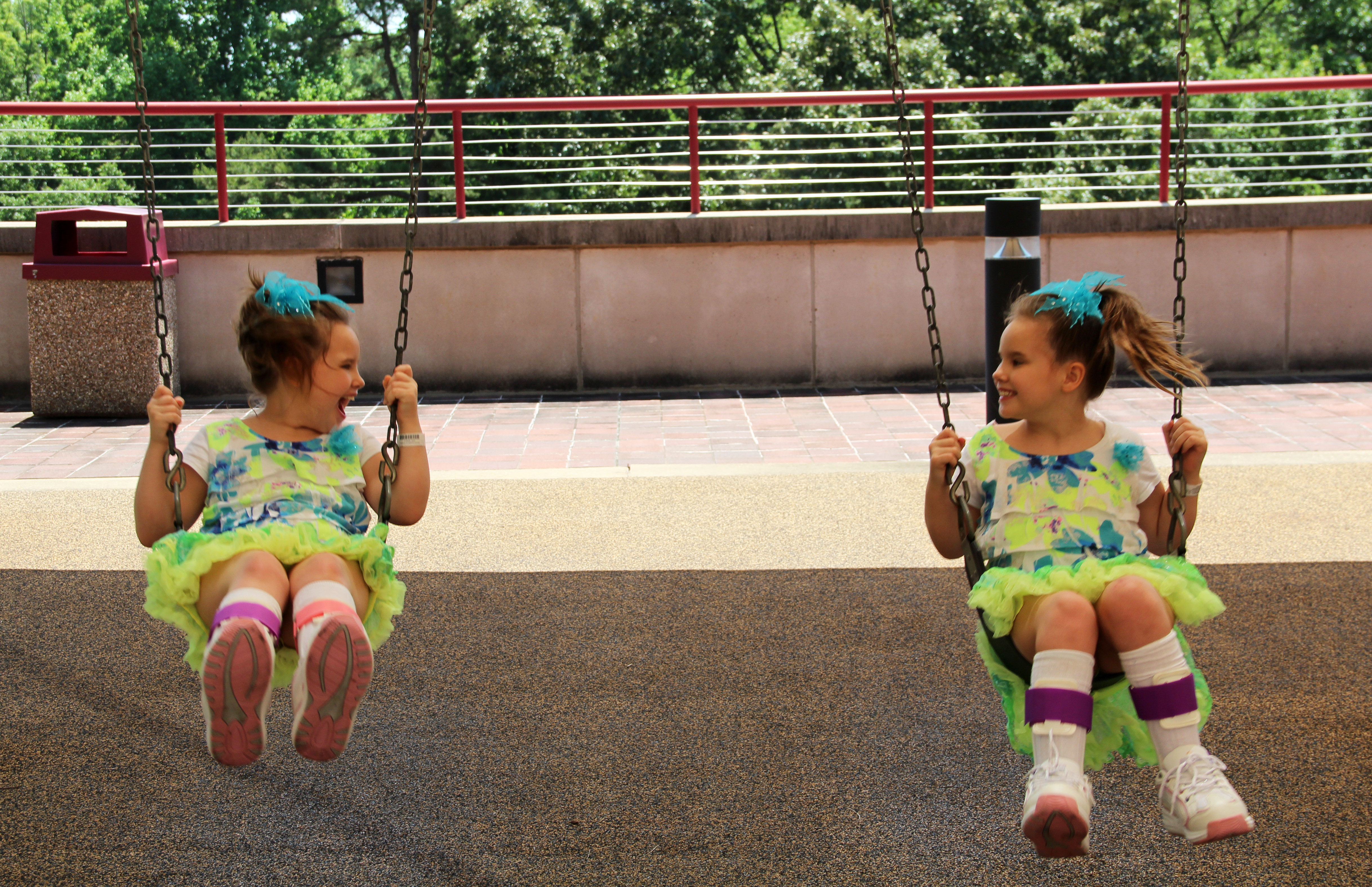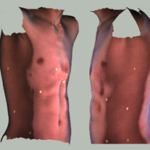Hinged vs solid AFOs for cerebral palsy: No significant difference in gait
There are no significant differences in gait or gross mobility between hinged and solid ankle-foot orthoses for patients with cerebral palsy who could walk without an assistive device, according to a study presented at the Association of Children’s Prosthetic-Orthotic Clinics Annual Meeting, here.

Rockers and rollovers: Implications for AFOs. Greenville Shriners Hospital photo
by Shawn M. Carter, Healio O&P News March 24, 2017
“This study demonstrates that while average scores between the two groups demonstrated no difference, there is a subset of patients that demonstrated an increase in [Gross Motor Function Measure] GMFM scores when wearing [ankle-foot orthoses] AFOs. Further analysis of this subset may lead to better patient selection for either AFO to improve balance and gross mobility,” researcher Hank White PT PhD, of the Shriners Hospital for Children in Lexington KY, said.
Researchers conducted an Institutional Review Board-approved retrospective study of 129 patients with cerebral palsy, aged 3 years to 19 years, who were seen between 2000 and 2016. Overall, 92 patients wore bilateral hinged AFOs and 37 wore bilateral solid AFOs. Forty patients were level 1 on the Gross Motor Function Classification System (GMFCS) and 89 were level 2. Repeated analysis of variance measures was used to assess changes in gait scores between barefoot and braced conditions, with the GMFCS level as the covariate.
Regardless of brace type, a significant decrease in cadence was noted. The AFOs resulted in increased stride length, and solid AFOs demonstrated a larger increase in stride length vs. hinged AFOs. A non-statistically significant increase in walking velocity was found with AFOs; however, there was no statistical difference between AFO types.

Figure 2. The illustration of ground reaction force in normal gait, crouch gait and after the use of floor reaction. Changes in joint kinematics in children with cerebral palsy while walking with and without a floor reaction ankle-foot orthosis, Lucareli PR, Lima Mde O, Lucarelli JG, Lima FP. Clinics (Sao Paulo). 2007 Feb;62(1):63-8.
According to White, there was significant difference between GMFCS levels for cadence and velocity, but none for stride length. There was a non-significant increase in Gait Deviation Index (GDI) scores and no difference between solid and hinged AFOs with regard to GDI scores. In addition, there was no significant difference in GDI scores between GMFCS levels.
There was also no significant difference between solid and hinged AFOs with regard to GMFM scores. However, White said, “average scores do not tell the whole story, because 42 subjects demonstrated an improvement in GMFM scores. Sixty-one had no change and 25 saw a decrease in scores. Those who demonstrated an increase in GMFM scores had significantly lower barefoot scores compared to those with no change or decrease in scores.”
Compared with barefoot walking trials, both AFO types resulted in an increase in stride length, a decrease in cadence and a non-significant increase in walking speed. On average, non-significant increases in GDI and GMFM scores were noted for both AFO types. With regard to balance, patients with lower barefoot GMFM scores showed larger increases in GMFM scores when wearing either AFO type, White said.
Source Healio O&P News
| References |
Do Different Types of AFOs Change Walking and Gross Mobility? Hank White PT PhD; JJ Wallace MS; Sam Augsburger MS; Janet Walker MD; Henry Iwinski MD. Presented at Association of Children’s Prosthetic-Orthotic Clinics Annual Meeting. March 22-25, 2017; Houston.
| Further reading |
A comparison of gait with solid and hinged ankle-foot orthoses in children with spastic diplegic cerebral palsy, Sandra A. Radtka, Stephen R. Skinner, M. Elise Johanson. Gait Posture 21 (3), 303-310. 4 2005. doi:10.1016/j.gaitpost.2004.03.004
Clinically prescribed orthoses demonstrate an increase in velocity of gait in children with cerebral palsy: a retrospective study, White H, Jenkins J, Neace WP, Tylkowski C, Walker J. Dev Med Child Neurol. 2002 Apr;44(4):227-32.
Comparison of Articulated and Rigid Ankle-Foot Orthoses in Children With Cerebral Palsy: A Systematic Review, Neto, Hugo Pasini PhD; Grecco, Luanda André Collange MS; Galli, Manuella PhD; Oliveira, Claudia Santos PhD. Pediatric Physical Therapy Winter 2012 – Volume 24 – Issue 4 – p 308–312 doi: 10.1097/PEP.0b013e318268a4fc
The Gait Deviation Index: a new comprehensive index of gait pathology, Schwartz MH, Rozumalski A. Gait Posture. 2008 Oct;28(3):351-7. doi: 10.1016/j.gaitpost.2008.05.001. Epub 2008 Jun 18.






